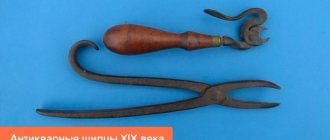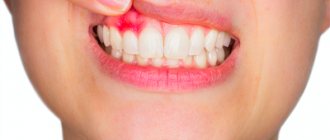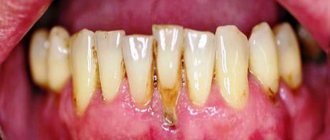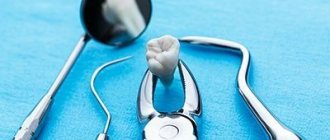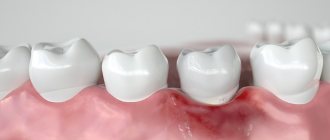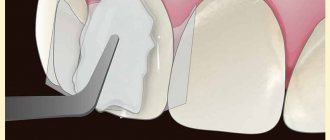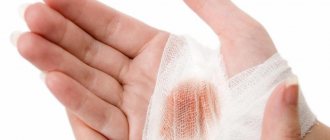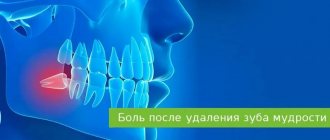Small wounds, cuts and abrasions are all common and quite common. You often encounter such troubles in everyday life. Most often, children encounter such problems, but adults are by no means immune from minor injuries.
Small wounds, cuts and abrasions are all common and quite common. You often encounter such troubles in everyday life. Most often, children encounter such problems, but adults are by no means immune from minor injuries.
On the one hand, the majority are sure that they probably know what to do - iodine, alcohol, a plaster or a bandage are the main helpers in trouble. However, everything is somewhat more complicated, because if the wound is treated incorrectly, you can get complications that will lead to infection, prolonged healing or an unsightly scar.
What are soft tissue wounds?
Soft tissue injuries include injuries to the skin, mucous membrane, deep-lying tissues (subcutaneous tissue, muscles, etc.), as well as tendons, blood vessels and nerves. As a result of a violation of the integrity of the skin, microbial contamination of the wound surface occurs, which can lead to the development of infection. According to the damaging factor, wounds are divided into mechanical, thermal (burn) and chemical; by instrument of injury - for wounds from blunt, sharp objects, tools and weapons, firearms and weapons; According to the nature of the damage, wounds are classified into bruised, lacerated, combined, bitten, stab, cut, stab-cut, chopped, sawn, combined bullet, shot, fragmentation. Based on the depth of damage, a distinction is made between superficial wounds, located in various layers of the skin, and deep wounds, occurring in deeper tissues. Wounds of internal organs and joints that communicate with the external environment through a wound channel are called open, and wounds whose wound channels pass through cavities or ending in them are called penetrating wounds. Wounds of internal organs that do not communicate with the external environment are classified as closed.
Classification of soft tissue injuries of the maxillofacial area.
Group I. Isolated injuries to the soft tissues of the face: - without violating the integrity of the skin or mucous membranes (bruises); - with a violation of the integrity of the skin of the face or mucous membrane (abrasions, wounds). Group II. Combined injuries to the soft tissues of the face and bones of the facial skull (with or without a violation of the integrity of the skin of the face and mucous membrane). The nature of soft tissue damage depends on the force of the impact, the type of traumatic agent and the location of the damage. Bruises Occur when a weak blow to the face with a blunt object damages the subcutaneous fat, muscles and ligaments without tearing the skin. As a result, a hematoma (bleeding) and post-traumatic edema are formed. The hematoma lasts 12-14 days, gradually changing color from purple to green and yellow. An abrasion occurs when the integrity of the surface layers of the skin is violated, which does not require sutures. It is most often observed in the chin, cheekbone, nose and forehead. Wound Formed when the skin is damaged when struck by a sharp or blunt object with sufficient force to break the integrity of the skin. The wound can be : - superficial (the skin and subcutaneous tissue are damaged); — deep (with damage to muscles, blood vessels and nerves); — penetrating into cavities (nose, mouth, paranasal sinuses); - with or without tissue defect; — with damage (or without) bone tissue; - cut, stabbed, chopped, torn, torn-bruised, bitten, depending on the type and shape of the wounding object and the nature of the tissue damage. Clinical characteristics
Features of the anatomical structure of the maxillofacial region and injuries of soft tissues of the face.
- Rich vascularity (good healing and risk of severe bleeding). — Rich innervation (possible pain shock, loss of sensitivity, paralysis of facial muscles). — Presence of salivary glands, tongue, large vessels and nerves (impaired function of swallowing, eating - chewing, difficulty speaking. When the parotid-masticatory area is injured, salivary fistulas are formed, when the facial nerve is injured - paresis of facial muscles). — The presence of a false defect (wound gaping due to contraction of facial or masticatory muscles). — Violation of the seal of the oral cavity, resulting in constant drooling (loss of fluid and nutrients) and the inability to take regular food. — Rupture of the mucous membrane due to damage by teeth. — Disfigurement with significant gaping of the wound (the type of wounded person does not correspond to the degree of damage). — There may be a true defect in the tissues of the nose, lips, ears, etc., leading to disfigurement and functional impairment. — Development of jaw contractures in the long-term period.
Local complaints
They depend on the type of damage. Bruises - complaints of pain, swelling, bluish bruising. They arise as a result of damage to subcutaneous fat and muscles without rupture of the skin, which is accompanied by crushing of small-caliber vessels and tissue imbibition with blood. Abrasions - concern about damage to the skin or mucous membranes. Pain due to a violation of the integrity of the surface layers of the skin (epidermis) or mucous membrane. Incised wound - the patient complains of injury to the skin, accompanied by bleeding and pain. There is damage to the entire thickness of the skin or oral mucosa, dissection of blood vessels, fascia, muscles, loose tissue, and nerve trunks. Puncture wound - complaints of minor soft tissue damage, moderate or heavy bleeding, pain at the site of injury. There is an entrance hole and a wound channel, and profuse bleeding when large vessels are injured. Chopped wound - the patient notes extensive damage to soft tissues, accompanied by heavy bleeding (possible damage to the bones of the facial skeleton). Lacerated wound - the presence of a wound with uneven edges (possibly with the presence of flaps and soft tissue defects), severe hemorrhages, moderate or severe bleeding, pain. Bruised wound - the presence of a wound, hematoma, hemorrhages, the presence of flaps, tissue defects, the surrounding tissues are crushed. A bite wound is the presence of a wound with uneven edges, the formation of flaps with teeth marks on damaged skin or on intact skin, there may be a tissue defect, bleeding, pain.
General complaints
Bruises, abrasions, bruised wounds, bitten wounds, lacerations - there are usually no general complaints. An incised wound, a puncture wound, a chopped wound - complaints will depend on the severity of the damage: pale skin, dizziness, weakness. Occurs due to blood loss. History of injury . Injury can be industrial, domestic, transport, sports, street, or while intoxicated. It is necessary to find out the time of injury and the time to see a doctor. If you contact a specialist late or receive incorrect care, the incidence of complications increases. Anamnesis of life . It is important to know concomitant or past diseases, bad habits, working and living conditions, which can lead to a decrease in the general and local defenses of the body and impaired tissue regeneration. General state. It can be satisfactory, moderate, or severe. Determined by the severity of the damage, which can be combined or extensive.
Causes
Incised wounds occur as a result of direct impact of a sharp weapon on the surface of the skin. Slash wounds are created when a sharp weapon is brought down onto the skin at an angle. Puncture wounds are the result of deep penetration by a sharp, thin instrument. Possible injury to cavities or joints. Contusion wounds occur when some part of the body comes into contact with a hard obstacle and there is solid support in the form of the skull or other bone. Crushed, crushed wounds are formed due to the impact of a blunt instrument with a wide surface when opposed to a solid support. Bite wounds. As a result of an animal or human bite, highly virulent wound infection pathogens can enter the wound.
Local changes in damage to the soft tissues of the face
Fresh damage
Bruises - the presence of a bluish-red bruise and swelling of tissues spreading to the surrounding soft tissues, palpation is painful.
Bruise of the soft tissues of the chin. Abrasion of the upper and lower lips
Abrasions - the presence of a wound to the surface layer of the skin or mucous membrane of the lips and oral cavity, pinpoint hemorrhages, hyperemia. Most often observed on the protruding parts of the face: nose, forehead, cheekbone and chin areas. An incised wound has cut smooth edges, usually gapes, and is several centimeters long. The length of the wound is several times greater than its depth and width, and bleeds profusely; Palpation of the edges of the wound is painful.
Wound of the lower lip with muscle damage
Incised wound of the face
A puncture wound has a small entrance hole, a deep, narrow wound channel, bleeds moderately or profusely, palpation in the wound area is painful, and nosebleeds are possible. The depth of penetration depends on the length of the weapon, the force applied and the absence of obstacles in the path of penetration of the weapon (bone). Heavy bleeding is possible when large vessels are injured, as well as destruction of the thin wall of the maxillary sinus. A chopped wound is a wide and deep wound that has smooth, raised edges if the wound is caused by a heavy sharp object. At the edges of the wide wound there is bruising, bruising, and additional tears (cracks) at the end of the wound when injured by a blunt object. In the depths of the wound there may be bone fragments and fragments in case of damage to the facial skeleton. There may be severe bleeding from a wound (nose, mouth) with penetrating wounds into the oral cavity, nose, or maxillary sinus. The lacerated wound has uneven edges, moderate or extensive gaping, there may be flaps when one skin or an entire layer is torn off; hemorrhage into the surrounding tissues and their detachment, palpation of the wound area is painful. This wound is caused by a blunt object and occurs when the physiological ability of the tissue to stretch is exceeded, and can simulate the formation of a defect. The bruised wound has an irregular shape with frayed edges. Additional breaks (cracks) may extend from the central wound in the form of rays; pronounced hemorrhages along the periphery and edema. The bite wound has uneven edges and resembles a laceration in nature, often with the formation of flaps or a true tissue defect with the presence of teeth marks. The bleeding is moderate, palpation in the wound area is painful. Most often observed in the area of the nose, lips, ear, cheeks. Traumatic amputation of tissue, part or all of the organ may occur
Additional research methods
Examination of the wound canal using a probe inserted into it. It is carried out to determine the length of the wound channel and its location in relation to vital organs. Radiography . - Puncture wound - there may be damage to the bone in the form of a hole as a result of a perforated bone fracture or the presence of a foreign body (part of a broken off wounding object). - Vulnerography of a stab wound - if it is impossible to examine the wound with a probe, a radiopaque substance is injected into the wound canal and X-rays are taken. - Chopped wound - the presence of bone damage and bone fragments when the bones of the facial skeleton are damaged. — A bruised wound is the presence of a fracture gap in the area of damage to one or another part of the facial skeleton (upper or lower jaw, zygomatic arch, nasal bones). General clinical blood tests. It is carried out in case of extensive blood loss in the case of cut, stab and chopped wounds to determine the blood group and Rh factor for the purpose of blood transfusion.
Symptoms
You can suspect a closed injury if you know the mechanism of injury (for example, a blow with a blunt object) and if one or more signs are present: bruising, swelling, pain. Some signs suggest the nature of the injury. For example, swelling and deformity may indicate a closed fracture. A bruise on the head, bloody discharge from the nose, ears and mouth - possible injury to the cervical spine or brain. Bruises on the chest, deformation, violation of symmetry - possible chest injury with damage to the ribs and sternum. Troubled breathing may indicate a lung injury. Large bruises on the abdomen – possible injury to an internal organ. Signs of a wound vary depending on the type and depth of tissue damage. As a rule, any damage is accompanied by pain, possible violation of the integrity of the skin, as well as bleeding.
Differential diagnosis of injuries to soft tissues of the face
Bruises : differentiated from hematoma in blood diseases. — Similar symptoms: the presence of a bluish-red bruise. — Distinctive symptoms: no history of trauma, pain. Abrasions : differentiated from scratches. — Similar symptoms: violation of the integrity of the surface layers of the skin, mild pain. — Distinctive symptoms: thin linear damage to the superficial layers of the skin. Incised wound : differentiated from a chopped wound. — Similar symptoms: damage to the skin or mucous membrane and underlying tissues, bleeding, pain. — Distinctive symptoms: extensive damage to soft tissues, hemorrhage into surrounding tissues, deep wound, often accompanied by damage to the facial skeleton. Laceration : differentiated from a bite wound. — Similar symptoms: the presence of an irregularly shaped wound, loose, uneven, scalloped edges, flaps or soft tissue defects may form, bleeding, pain. — Distinctive symptoms: animal and human teeth are wounding weapons; their imprints can remain on the skin in the form of bruises. Incised wound : differentiated from a stab wound. — Similar symptoms: damage to the integrity of the skin or mucous membrane, bleeding, pain. — Distinctive symptoms: the presence of a small, sometimes pinpoint entry hole and a long, deep wound channel.
Diagnostics
For small superficial wounds that are not accompanied by general symptoms, the diagnosis is made based on the clinical picture. A detailed examination is carried out during the initial treatment of the wound. For extensive and deep wounds with a violation of the general condition, additional studies are necessary, the list of which is determined taking into account the location of the damage. For injuries in the chest area, a chest x-ray is prescribed, for injuries in the abdominal area, an abdominal x-ray, ultrasound or laparoscopy, etc. If a violation of the integrity of blood vessels and nerves is suspected, consultation with a neurosurgeon and vascular surgeon is required.
Treatment
First medical aid consists of primary surgical treatment of the wound, during which foreign bodies are removed from the wound, bleeding is stopped, the wound is washed with antiseptics, and non-viable tissue is excised. The issue of preventing tetanus and rabies (if the wound is a bite) is also being addressed. Wounds with severe inflammation are not sutured; they are drained. An infected wound heals by secondary intention. Dressings and drainage changes are performed daily. General treatment consists of anti-inflammatory therapy, administration of hemostatic agents, and painkillers. In case of heavy blood loss, the issue of replacing the volume of circulating blood (CBV) is resolved, blood substitutes and blood components are introduced. Subsequently, in case of severe scar contractures and deformities, restorative surgery may be repeated. Most often, superficial wounds do not bleed much. Therefore, help consists of bandaging the wound. Before this procedure, the edges are lubricated with an antiseptic, making sure that it does not get into the wound. The wound is covered with a sterile napkin and bandaged. If the edges of the wound are significantly separated, before applying bandages they must be brought together (but not until they are closed) and fixed in this position with 2-3 strips of adhesive tape. The wound should not be washed with water (risk of infection), or with alcohol or iodine tincture. A disinfectant solution entering a wound causes the death of damaged cells and also causes significant pain. Do not apply any ointment to the wound, or place cotton wool directly into the wound. We should not forget about vitamin therapy. Vitamin deficiency sharply slows down reparative (restorative) processes. To speed up wound healing, proper nutrition of patients is important, especially those who have suffered traumatic shock, severe infection or major surgery. They need a complete diet with increased amounts of protein and vitamins. Physical therapy is indicated primarily for purulent wounds of the upper extremities. Physiotherapeutic procedures play an important role: ultraviolet irradiation, UHF, etc.
Treatment of facial soft tissue injuries
Emergency care : carried out at the prehospital stage to prevent wound infection and bleeding from small vessels. The skin around the wound is treated with iodine solution, the bleeding is stopped by applying a bandage. For abrasions, the primary dressing can be performed using a protective film of film-forming preparations applied to the wound. If there is simultaneous bone damage, transport immobilization is applied. Treatment of a patient in a clinic Indications : bruises, abrasions, cut, stab, torn, bruised and bitten wounds of small size, requiring a small excision of its edges and subsequent immediate suturing. Treatment of a bruise : cold in the first two days, then heat to resolve the hematoma. Treatment of abrasions : treatment with an antiseptic, heals under the crust. Treatment of cut, stab, lacerated, bruised, bitten wounds. PSO of the wound is performed. PHO is a set of measures aimed at speedy and without complications wound healing. PCS must be radical, immediate and final.

